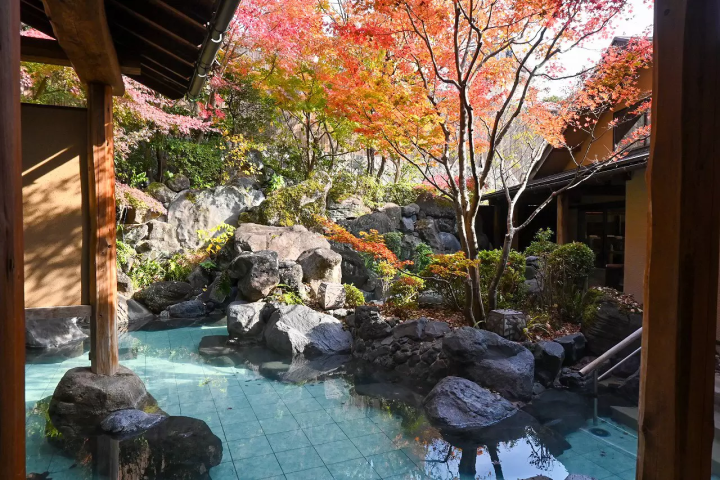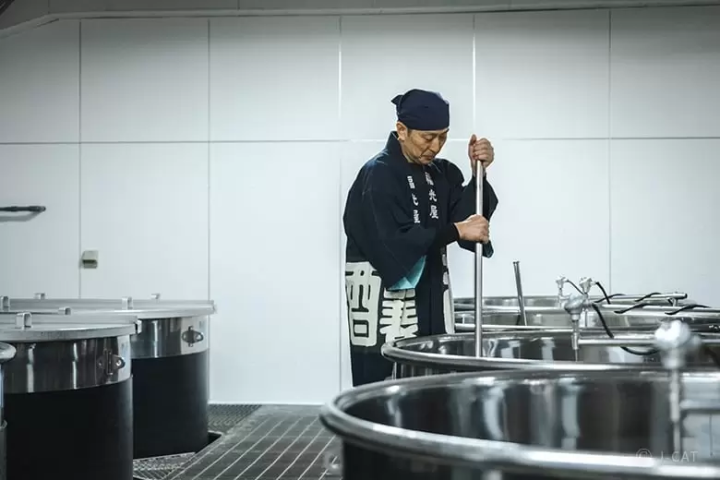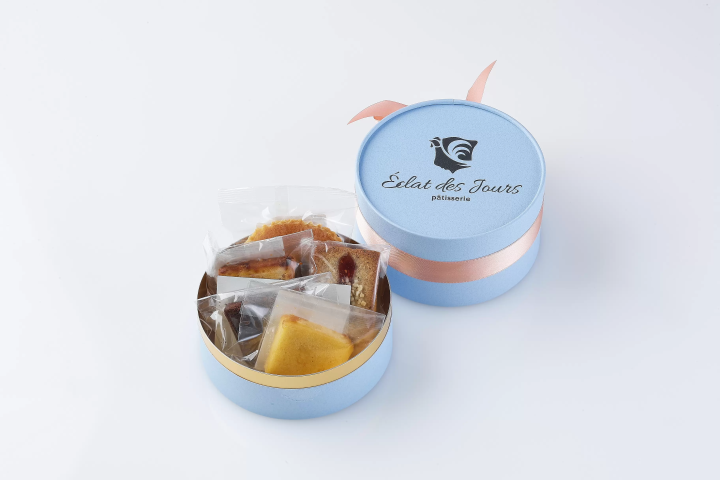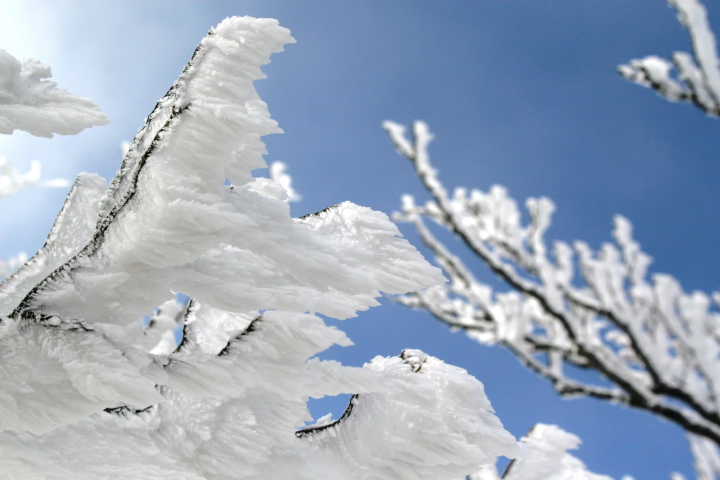I was soothed by the sight of fresh green maples at Ukan Gorge and the Katayama Residence in Kibichuo Town.

Ukan Gorge , a famous maple viewing spot in Kibichuo Town , is also in the peak season for fresh greenery, and the red bridge over the Ukai River looks more beautiful than usual.
Ukan Gorge

The 5km-long Ukan Gorge , a tributary of the Asahikawa , one of Okayama 's three major rivers, is designated as Kibi Seiryu Prefectural Natural Park, where you can enjoy the various expressions of nature throughout the four seasons. The symbolic red bridge also looks even more dazzling from the parking lot.
Akabashi Bridge

The red bridge over the Ugamagawa River. Looking down makes your legs tremble, but it's so charming that you'll want to try crossing it, even though it's scary.
Senryu Path

The area around the parking lot is also beautiful with the fresh green maples, and is now in its peak season. There is also a Senryu Trail, dotted with stone monuments with Senryu poems engraved on them, which you can enjoy walking around.
Iwaya's Toilet

There was a stone monument with the words "Iwaya no Toilet" written on it. It was a toilet, but I was drawn to it because it looked like a cave with a waterfall and beautiful fresh greenery. The toilet was inside a cave made of rocks. It changed my concept of toilets.
The maple trees around the parking lot are also beautiful.

The area around the parking lot was also beautiful with the fresh green maple trees.

[ Ukan Gorge]
Address: 1760 Okayama Prefecture , Kibichuo Kamo, Kaga Prefecture
TEL: 0866-54-1301 ( Kibichuo Town Collaboration Promotion Division)
Katayama Residence

The Katayama Residence, located about a five-minute drive from Ukan Gorge , was a vast mansion complete with a Nagayamon gate and sake brewery, but these were demolished due to road improvement work, and now only the main house remains. The main house was built in 1881 (Meiji 14) by a carpenter from Iwami Province (Ota City, Ota City Shimane Prefecture ), and is highly praised by experts as "a perfect example of Japanese architecture, retaining some of the Edo period style, and with a structure and interior design that is worth seeing."
You can freely visit

The Katayama Residence is a large, old house also known as the "Hyakutatami Mansion." Once you pass through the gate, you'll find a spacious garden, and you can take off your shoes and freely explore the inside of the building.
The fresh green maples in the garden were in full bloom.

The courtyard was well maintained, and the fresh green leaves of the Japanese maples were in full bloom. I'm sure the autumn foliage will be spectacular.
parlor

Going through the tatami room, I could see the dirt floor room. It had a certain Edo period atmosphere to it. It was truly spacious, as it was called the "100 Tatami House"!
veranda

You can spend some relaxing time looking out at the garden from the veranda. The fresh green leaves of the maple trees are spectacular in autumn. Even though 100 years have passed, the garden has been beautifully maintained and the scenery is so beautiful that just looking at it is soothing.
Maple trees in the backyard

The fresh green maple trees in the backyard are also beautiful, and you can see both the courtyard and backyard from inside the spacious mansion.
Katayama family collection

If you go up to the second floor, there are exhibits that tell the history of the Katayama family, and you can see the items that were in their possession. There is a large basket on display, and it feels like you have traveled back in time to the Edo period. This mansion dates back to the time of Katayama Shigenori, the eldest son of Katayama Asataro, a government official and Chinese scholar, and Shigeru, and you can see that it has a history of 100 years.
Hidden Room

I found an interesting room. It was a hidden room designed to hide the entrance from downstairs, allowing guests and family members to evacuate in case of unexpected intruders. It was dimly lit, but surprisingly spacious, and the tatami room looked comfortable.
Teahouse Katayamatei
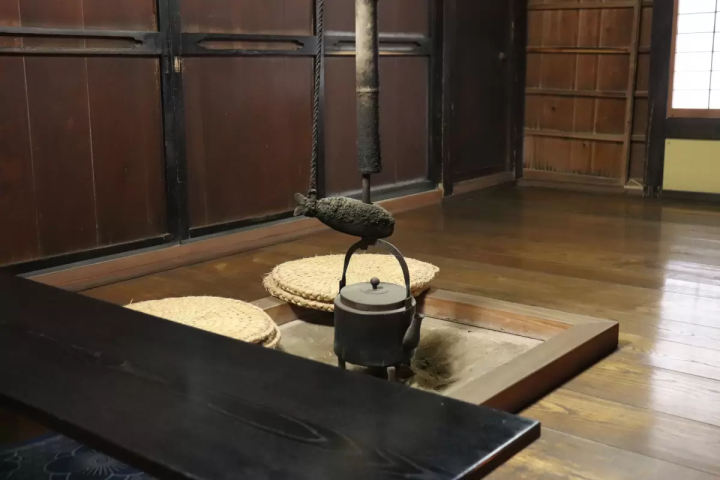
There is a tea room in the house where light meals and coffee menus are served. There is also a space around the Irori (traditional sunken hearth) where you can sit and eat. The high ceilings and spaciousness make it a very relaxing place.
Whimsical lunch box

The photo shows the "Kimagure Bento." The food was made with locally grown seasonal vegetables and was very delicious. The rice was also locally grown Koshihikari. I often hear that Kibichuo Town rice is delicious, and it was truly delicious. The price of 850 yen is also very reasonable! They also have a cafe menu, so feel free to drop by.
[Katayama Residence and Tea House Katayama Residence]
Address: 15-1 Shimokamo, Kibichuo Kamo, Okayama Prefecture Kaga
TEL: 0867-34-0747
Opening hours: 10:00-15:00
Closed: Wednesdays and Sundays *Irregular holidays
Parking: Available
Okayama Prefecture is located in the Center of Western Japan and is known as the "Land of Sunshine" due to its warm climate and little rain throughout the year. It's conveniently located halfway between famous tourist destinations like Kyoto, Osaka, and Hiroshima! It's also the gateway to Shikoku via the Seto. Okayama is also known as the "Fruit Okayama," and the fruits that are sun-drenched in the warm climate of the Setouchi are of the highest quality in terms of sweetness, aroma, and flavor. You can enjoy seasonal fruits such as white peaches, Muscat grapes, and Pione grapes! Okayama is also home to world-class tourist spots, including Okayama Castle, Okayama Korakuen Garden, one of Japan's three most famous gardens, and Kurashiki Bikan Historical Quarter, which boasts history, culture, and art!
The contents on this page may partially contain automatic translation.



























![[For beginners and debutants] Special feature on recommended ski resorts and ski tours!](https://resources.matcha-jp.com/resize/720x2000/2025/12/26-254120.webp)
